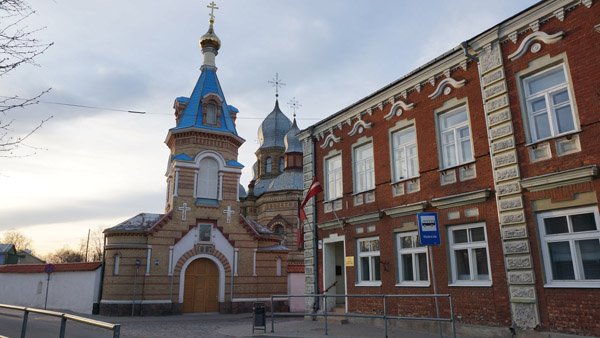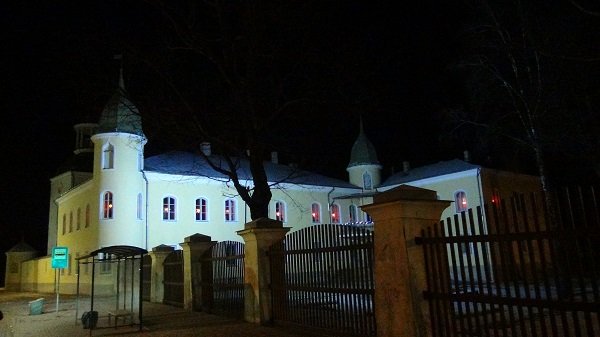Jēkabpils (pop. 29 000) is a town in central Latvia that spans river Daugava.
Historically, it was actually two separate towns, with Jēkabpils standing on the left bank (Semigallia region) and Krustpils on the right bank (Latgale region). As both banks have been united by a bridge (1936) and the unification of Latvia (1918) abolished political differences on the two banks, the municipalities have also been combined into a single Jēkabpils town.
Originally established by Old Believer refugees who were then joined by Lithuanians and Poles, Jēkabpils was always a multiethnic and multireligious city. This is evident in the fact that houses of worship of 7 different faiths still stand, all of them at least 80 years old.
Among the religious buildings the Russian Orthodox Monastery of the Holy Ghost that consists of multiple churches is the most impressive.

Other old churches are Roman Catholic (19th century), Baptist (1930), Old Believer (1889), Uniate (1783), Krustpils Lutheran (17th century), Krustpils Orthodox (1910). Many are rather small as in such a multireligious place relatively few people would belong to each congregation. However, they represent the styles popular in respective religions, with domed Orthodox churches, wooden Old Believer church, simple Baptist and Lutheran churches and relatively posh-looking Uniate and Catholic ones.
Jēkabpils side of Daugava has a main square and a nice promenade on Daugava banks, as well as some old streets.
The main building in Krustpils side of Daugava is Krustpils castle, now serving as the local museum. It was originally built by Archbishop of Riga in Medieval times (when whole Latvia was scrambled by Christian theocracies), but renovated extensively afterwards as it remained in use up to 20th century when Soviet army was stationed there.

Interestingly, Jēkabpils even has a UNESCO World Heritage site. However, it is so small that one would not notice it if not for massive advertisements. UNESCO-inscribed object in question is the 2820 km long Struve geodetic arc – a network of stations the Baltic German geographer built in 1816-1855 to calculate the lenght of Earth meridian. Jēkabpils has one such station, now surrounded by a Struve park. There are many stations like that in Eastern Europe, going from Norway to Ukraine.
Krustpils also serves as the railway hub, having a station with Riga-bound trains. Bus station is however in Jēkabpils-proper.
